Class 6 Exam > Class 6 Notes > Year 6 Science IGCSE (Cambridge) > Chapter Notes: Light and The Solar System
Light and The Solar System Chapter Notes | Year 6 Science IGCSE (Cambridge) - Class 6 PDF Download
Reflection

Reflected Light
- Reflection is the bouncing back of light rays when they hit a smooth surface. Smooth and polished surfaces, like mirrors, are excellent at reflecting light.
- Plane mirrors are flat mirrors that create a mirror image of an object, such as your face, by bouncing light from that object. When light from an object reaches our eyes, we assume it has travelled in a straight line, which is usually true.
- Reflected light forms a mirror image, which is a second version of the original object seen in the mirror. Calm, clear water, like a lake, also reflects light well, creating a mirror image of objects, such as a flamingo in the water.
How does light travel when it reflects?
- Reflection of light off a mirror is similar to a ball bouncing off a hard surface. When a ball is dropped straight down, it bounces straight back; similarly, light reflects in a predictable way. If a ball is thrown at an angle, it bounces off at the same angle to the surface.
- Light reflects from a mirror at the same angle it arrives, measured against a line called the normal. The normal is a line that is drawn at right angles (90°) to the mirror’s surface.
- The incoming ray of light is called the incident ray. The light that bounces off the mirror is called the reflected ray. The angle between the incident ray and the normal is equal to the angle between the reflected ray and the normal.
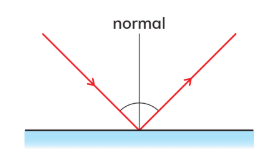
Periscopes
- Periscopes are devices that use plane mirrors and the principle of reflection to help users see over obstacles.
- They are designed to assist people in viewing things that are blocked by others, such as at a crowded event like a golf championship.
- Periscopes work by reflecting light through a series of mirrors, changing the path of the light to the viewer's eyes.
Refraction
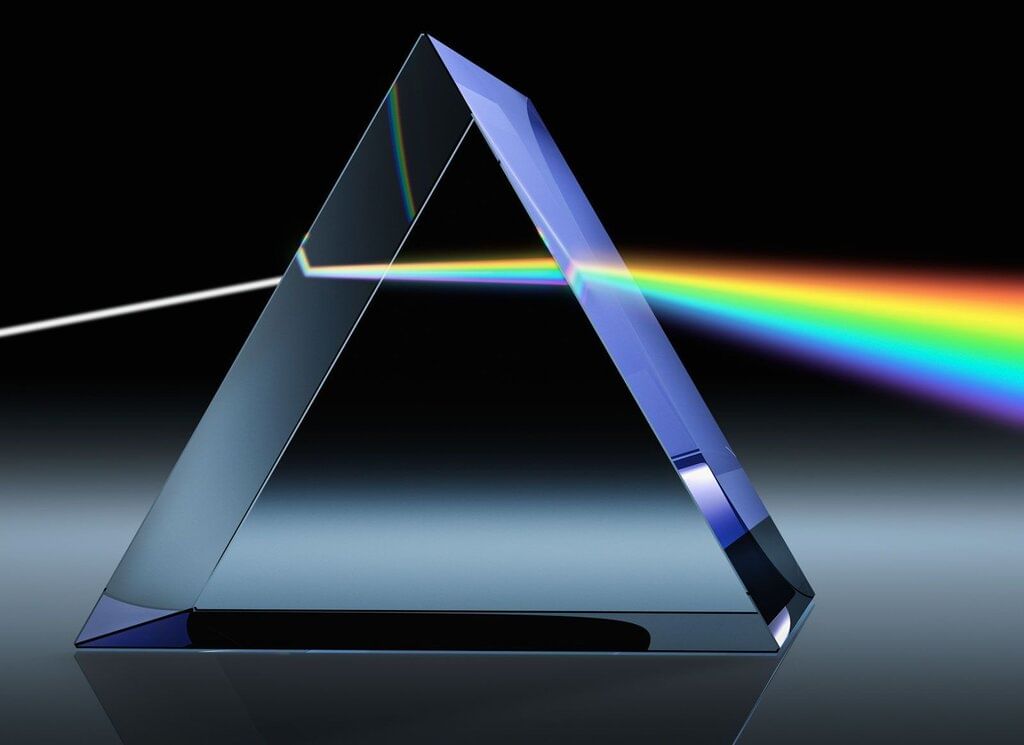
What is refraction?
- Refraction is the bending of light as it passes from one medium to another. This occurs because light travels at different speeds in different materials, such as water, glass, or air.
- For instance, when light from a fish underwater moves into the air, it bends, creating an optical illusion. An optical illusion is when what you see does not match reality, like perceiving a fish in a different position due to the bending of light.
Lenses
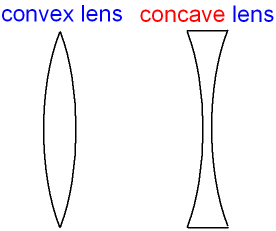
- A lens is a transparent object with at least one curved surface that bends light in beneficial ways. Lenses are present in human eyes and are also made from materials like glass or clear plastic.
- They refract light rays as they pass through, causing objects to appear larger or smaller. A convex lens converges light rays inward, leading them to a point known as the focal point, which enlarges the appearance of objects.
- Convex lenses are utilized in eyeglasses, projectors, microscopes, binoculars, and telescopes to concentrate light. Powerful convex lenses in telescopes allow us to observe distant planets and moons in our solar system.
Prisms and Rainbows
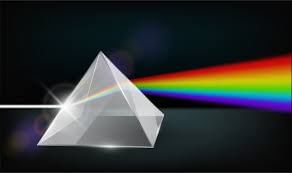
- A prism is a triangular block made of glass or transparent plastic. Although white light appears colourless, it is actually composed of various colours.
- When a narrow beam of white light passes through a prism, it bends and separates into a spectrum of colours: red, orange, yellow, green, blue, indigo, and violet.
- Each colour bends at a slightly different angle, causing the colours to disperse. A rainbow is an optical phenomenon created when sunlight bends through raindrops, which function like tiny prisms.
- Rainbows occur when it is both sunny and rainy simultaneously, with the Sun behind the observer and rain in front. The bending of sunlight in raindrops splits white light into its constituent colours, forming a coloured arc in the sky.
The Solar System
Positions of the Sun and Planets in the Solar System
- Grasping the distances and sizes in space is challenging due to their immense scale. The Moon and Sun appear similar in size from Earth, but the Sun is approximately 500 times larger than the Moon.
- Despite the Sun's greater size, it looks the same size as the Moon because it is much farther from Earth (about 150 million km) compared to the Moon (about 390,000 km).
- The Solar System consists of four small planets (Mercury, Venus, Earth, and Mars) closer to the Sun and four larger planets (Jupiter, Saturn, Uranus, and Neptune) situated further away.
- Mercury is about 60 million km from the Sun, while Neptune is roughly 4,500 million km away. To accurately draw the Solar System to scale, an enormous sheet of paper would be needed, with Neptune positioned a kilometre away from the Sun.
Movements of the planets in the Solar System
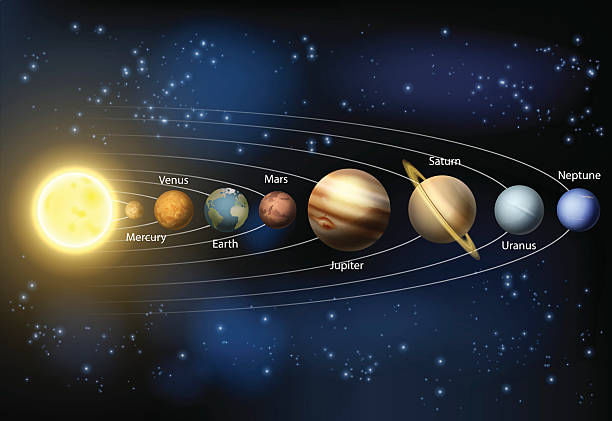
Earth rotates on its axis once every 24 hours (one Earth day) and orbits the Sun once every 365.25 days (one Earth year). All celestial bodies in the Solar System move regularly, including spinning on their axes and orbiting the Sun. The duration for other bodies to rotate or orbit varies and is measured in Earth days or years.
- Sun: Rotates at its equator once every 25 Earth days.
- Mercury: Rotates on its axis every 58.7 Earth days, orbits the Sun in 88 Earth days, and has no moons.
- Venus: Rotates on its axis every 243 Earth days (in the opposite direction to most planets), orbits the Sun in 225 Earth days, and has no moons.
- Earth: Rotates on its axis every 24 hours, orbits the Sun in 365.25 days, and has one moon.
- Mars: Rotates on its axis every 24.62 Earth hours, orbits the Sun in 687 Earth days, and has two small moons (Phobos and Deimos).
- Jupiter: Rotates on its axis every 9.8 Earth hours, orbits the Sun in 11.9 Earth years, and has at least 16 moons, with Ganymede being larger than Mercury. It is composed mainly of gases.
- Saturn: Rotates on its axis every 10.2 Earth hours, orbits the Sun in 29.5 Earth years, has 18 moons, and is also primarily made of gases.
- Uranus: Rotates on its axis every 10.2 Earth hours, orbits the Sun in 29.5 Earth years, has 15 moons, and is mostly composed of ice.
- Neptune: Rotates on its axis every 19.1 Earth hours, orbits the Sun in 164.8 Earth years, has 8 moons, and is mainly made of ice.
Earth’s Moon
- Earth has one moon, which takes 29.5 days to complete its orbit around Earth, defining a month. The Moon’s appearance changes over a month due to its phases, depending on how much of the sunlit half is visible from Earth.
- Only half of the Moon is lit by the Sun at any time, just like Earth. A full Moon occurs when the entire lit half faces Earth, appearing as a complete circle, seen once per month.
Phases of the Moon
The phases of the Moon are observed as it orbits Earth, caused by the changing visibility of the sunlit half. The Sun illuminates the right half of both the Moon and Earth, while the other half remains in darkness.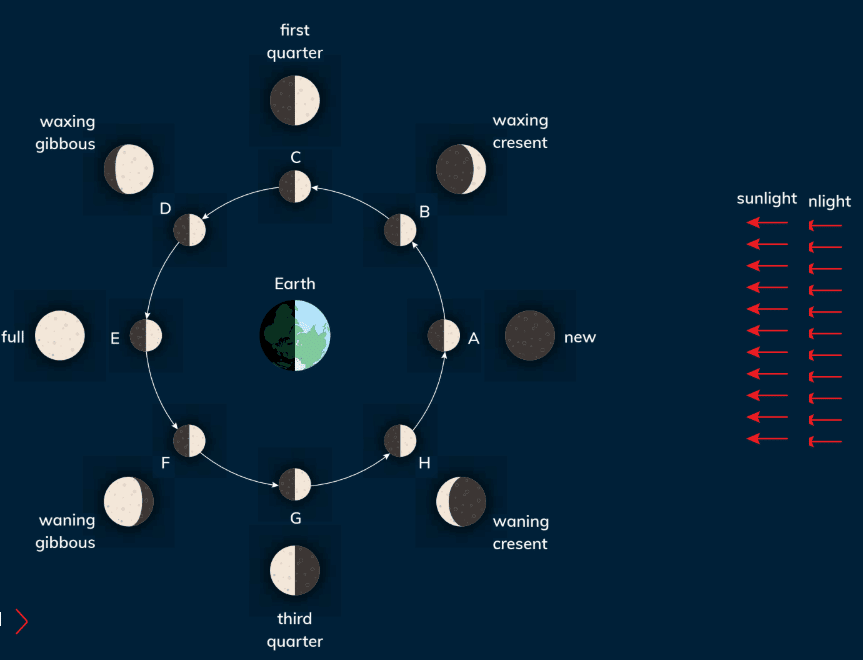
- New Moon (Position A): The side facing Earth is completely dark, making the Moon invisible.
- Crescent (Positions B and H): About a quarter of the Moon is lit, appearing as a thin slice (waxing crescent after new Moon, waning crescent before new Moon).
- First Quarter (Position C) and Third Quarter (Position G): Half of the Moon is lit, looking semi-circular.
- Gibbous (Positions D and F): About three-quarters of the Moon is lit (waxing gibbous before full Moon, waning gibbous after full Moon).
- Full Moon (Position E): The entire lit side faces Earth, appearing as a full circle.
- Waxing: The Moon appears to grow larger each night from new Moon to full Moon (Positions A to E).
- Waning: The Moon seems to shrink each night from full Moon back to new Moon (Positions E to A).
The document Light and The Solar System Chapter Notes | Year 6 Science IGCSE (Cambridge) - Class 6 is a part of the Class 6 Course Year 6 Science IGCSE (Cambridge).
All you need of Class 6 at this link: Class 6
|
29 docs|6 tests
|
FAQs on Light and The Solar System Chapter Notes - Year 6 Science IGCSE (Cambridge) - Class 6
| 1. What is the difference between reflection and refraction of light? |  |
Ans.Reflection is the bouncing back of light when it hits a surface, while refraction is the bending of light as it passes from one medium to another, changing its speed.
| 2. How does reflection occur in everyday life? |  |
Ans.Reflection occurs in everyday life when we see our image in mirrors, when light bounces off surfaces like water or glass, allowing us to perceive objects.
| 3. What are the main components of the Solar System? |  |
Ans.The main components of the Solar System include the Sun, eight planets (Mercury, Venus, Earth, Mars, Jupiter, Saturn, Uranus, and Neptune), their moons, dwarf planets like Pluto, and various asteroids and comets.
| 4. How does refraction affect our view of objects in water? |  |
Ans.Refraction causes objects underwater to appear closer to the surface than they actually are, making them look distorted or shifted from their original position.
| 5. Why is understanding light important in studying the Solar System? |  |
Ans.Understanding light is crucial in studying the Solar System because it allows us to analyze celestial bodies, their compositions, and distances through techniques like spectroscopy and the observation of light spectra.
Related Searches





















